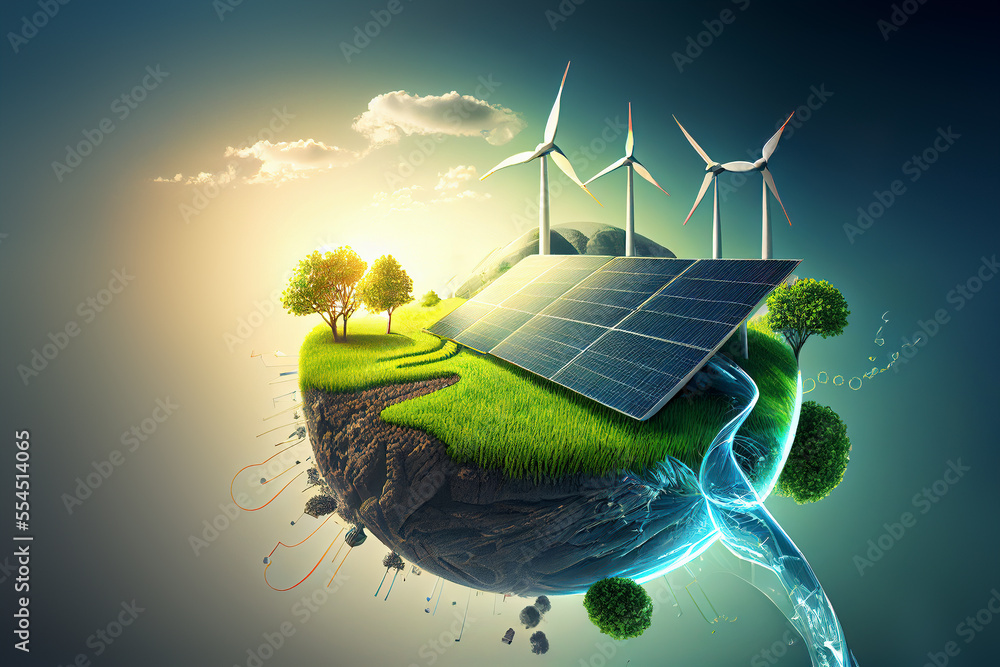The intricate relationship between energy and the environment has emerged as a pivotal subject in contemporary scientific discourse. As the global consciousness regarding climate change and ecological preservation intensifies, it becomes imperative to dissect how energy production and consumption models directly impact environmental health. One might ponder, can the path to sustainable energy coexist harmoniously with environmental stewardship, or does it present an enigmatic conundrum? This discourse aims to unravel the complexities inherent in the nexus of energy and environmental sustainability, illuminating both challenges and potential pathways.
To commence, it is essential to delineate the types of energy sources that underpin our modern society. Energy can be broadly categorized into two primary classifications: renewable and non-renewable. Renewable energy sources, such as solar, wind, hydroelectric, and geothermal, are often heralded for their minimal ecological footprints and capacity to replenish naturally. Conversely, non-renewable energy sources—primarily fossil fuels like coal, oil, and natural gas—are noted for their substantial environmental repercussions, including greenhouse gas emissions that contribute to global warming. The dichotomy between these two classes complicates our energy landscape significantly.
When probing deeper into energy generation, it becomes evident that the environmental ramifications extend beyond mere emissions. The extraction processes for fossil fuels often lead to habitat degradation, pollution of water sources, and loss of biodiversity. For instance, coal mining can result in extensive landscape alteration, while oil spills have devastating effects on marine ecosystems. These adverse effects starkly contrast with the environmental benefits offered by renewable energy sources, which, despite their own set of challenges, are generally more aligned with ecological preservation.
However, the transition from conventional energy systems to renewable alternatives is laden with obstacles. One of the foremost challenges is the current infrastructural dependence on fossil fuels, which has entrenched economic and political systems globally. The question arises: how can nations cultivate an energy paradigm that prioritizes sustainability while dismantling established interests? It is a delicate balance that necessitates innovative policy frameworks, investment in green technologies, and societal engagement.
Moreover, the intermittent nature of renewable energy sources presents another formidable challenge. Solar energy is only generated during daylight, and wind energy is dependent on atmospheric conditions. Developing robust energy storage solutions—such as batteries or alternative technologies—has emerged as a critical factor in ensuring a reliable energy supply that complements renewable sources. The question then transitions to: is it feasible to create a grid that seamlessly integrates various energy sources to optimize efficiency and minimize environmental impact?
The integration of energy efficiency measures is a crucial element of this discussion. Energy efficiency pertains to utilizing less energy to provide the same service, thus mitigating waste. For instance, retrofitting buildings with better insulation and energy-efficient appliances can drastically reduce associated energy consumption and emissions. Implementing such measures can create a dual benefit: alleviating environmental stressors while simultaneously saving financial resources. Could it be that the most profound changes arise not solely from adopting new technologies, but also from optimizing existing infrastructures?
Additionally, policy measures and regulations play an integral role in shaping the energy-environment nexus. Governments can enact legislation that promotes cleaner energy sources or incentivizes the adoption of energy-efficient practices. For example, carbon pricing mechanisms can effectively internalize the environmental costs associated with fossil fuel consumption, providing economic incentives for industries to transition toward greener practices. This raises an intriguing consideration: how might global cooperation and adherence to frameworks such as the Paris Agreement catalyze substantial shifts in national energy policies and environmental standards?
The role of public awareness and education cannot be overlooked in this discourse. As citizens become increasingly informed about environmental issues and their correlation with energy consumption, they can become catalysts for change. Grassroots movements advocating for renewable energy projects have proliferated, resulted in a bottom-up approach that can pressure governments and corporations alike to adopt sustainable practices. The provocative query surfaces: to what extent can informed citizenry influence systemic transformations in energy policy and environmental governance?
In addition to these societal dimensions, technological advancements hold promise in reconciling energy demands with environmental concerns. Innovations such as smart grids, advanced battery technologies, and bioengineered fuels exhibit potential for creating a more sustainable energy ecosystem. Emerging research on carbon capture and storage technologies seeks to mitigate the ecological impact of fossil fuel reliance by trapping and sequestering carbon emissions before they enter the atmosphere. This raises a compelling question: could technological ingenuity outpace the environmental degradation historically wrought by human activity?
Ultimately, the interdependence of energy and the environment presents a multifaceted challenge that warrants comprehensive exploration and concerted action. The trajectory toward sustainable energy systems requires not only technological innovation but also a paradigm shift in societal attitudes toward consumption and environmental stewardship. As nations grapple with the realities of climate change, it becomes increasingly clear that an integrated approach—combining policy reform, public engagement, and technological advancement—is paramount.
In conclusion, as we stand at a critical juncture in our geological epoch, the aspiration for a sustainable energy future that squares with environmental preservation may not only be achievable, but imperative. The intimate connection between energy and the environment beckons a profound reevaluation of our practices and policies. Can humanity rise to this audacious challenge and forge a path toward ecological harmony, or will the inertia of the past continue to thwart progress? The answers lie not in isolation but in a collaborative, informed, and innovative discourse that inspires action for generations to come.










